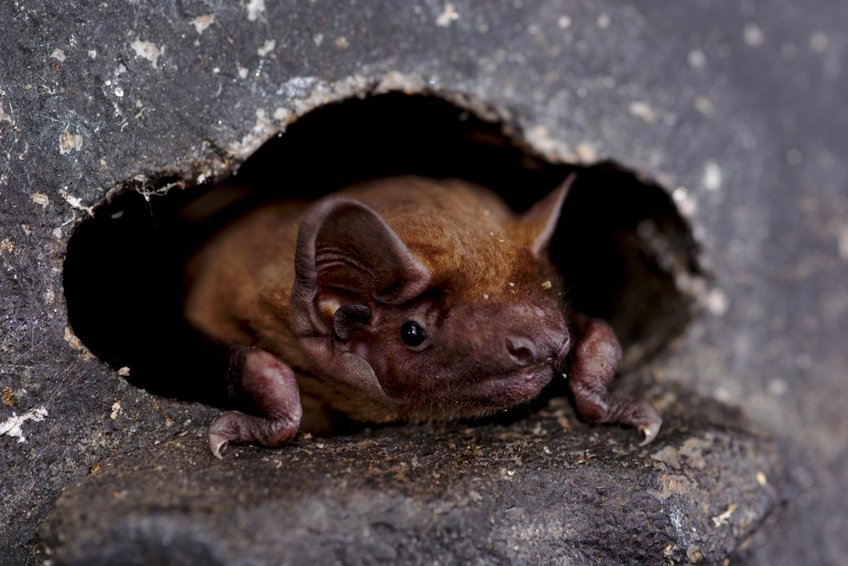
Adaptations to ephemeral resources in tropical and temperate bat species
Here we investigate bats that seasonally or year-round feed on ephemeral resources, i.e. resources that are unpredictable in time and/or space, and how this can lead to increased foraging efficiency through social foraging and information transfer, ultimately helping to explain sociality in these species.
Our main focus is on species that are morphologically adapted to open-aerial foraging and a diet of swarming insects, such as Neotropical Pallas’ free-tailed bat (Molossus molossus, see also Jacqueline Dettinger), lesser and greater bulldog bats (Noctilio albiventris, see also Jenna Kohles), the greater spear-nosed bat (Phyllostomus hastatus, see also Camila Calderon) or the temperate common noctule (Nyctalus noctula, see also Lara Keicher).
We use various methods, such as recently developed and miniaturized heart rate transmitters and stable breath isotopes in addition to various movement tracking technologies to estimate the metabolic costs and benefits of these bats evolved to survive at energetic extremes. For the past 17 years, the Dechmann lab has worked in Panama, often collaborating with Rachel Page and her lab at the Smithsonian Tropical Research Institute where Dechmann is an associate staff member.
In the temperate zones, most bats are only seasonally social and the leading hypothesis is that while the costs of sociality outweigh the benefits throughout most of the year, reproductive females benefit from social thermoregulation during this energy-demanding time period. However, in the few species where male colonies are also reported, these males form short-lived social groups that occupy the same ecological niche (i.e. specialization on ephemeral swarming insects) as our tropical study species. Social foraging via acoustic information transfer has been postulated as a putative reason for these seasonal groups. Using our findings gleaned from our tropical species, we look at how social foraging may be an additional driver of colony formation in both sexes of the common noctule (Nyctalus noctula) and in males of the parti-coloured bat (Vespertilio murinus; collaboration with Irek Ruzcynski). Current bat crew members are PhD students Lara Keicher, Jenna Kohles and Camila Calderon, master students Jacqueline Dettinger and Melina Dietzer and collaborators Teague O'Mara and Meg Crofoot.